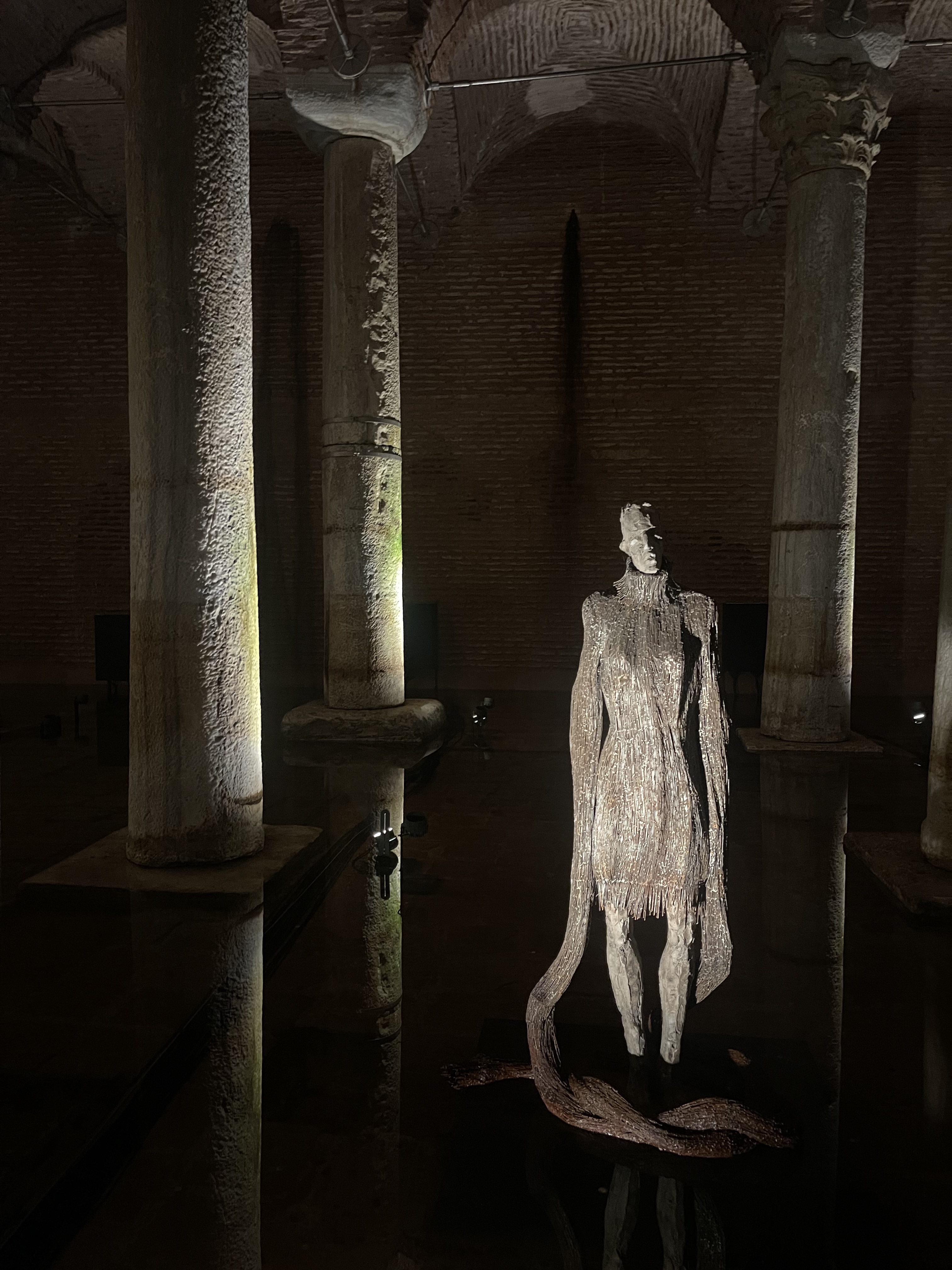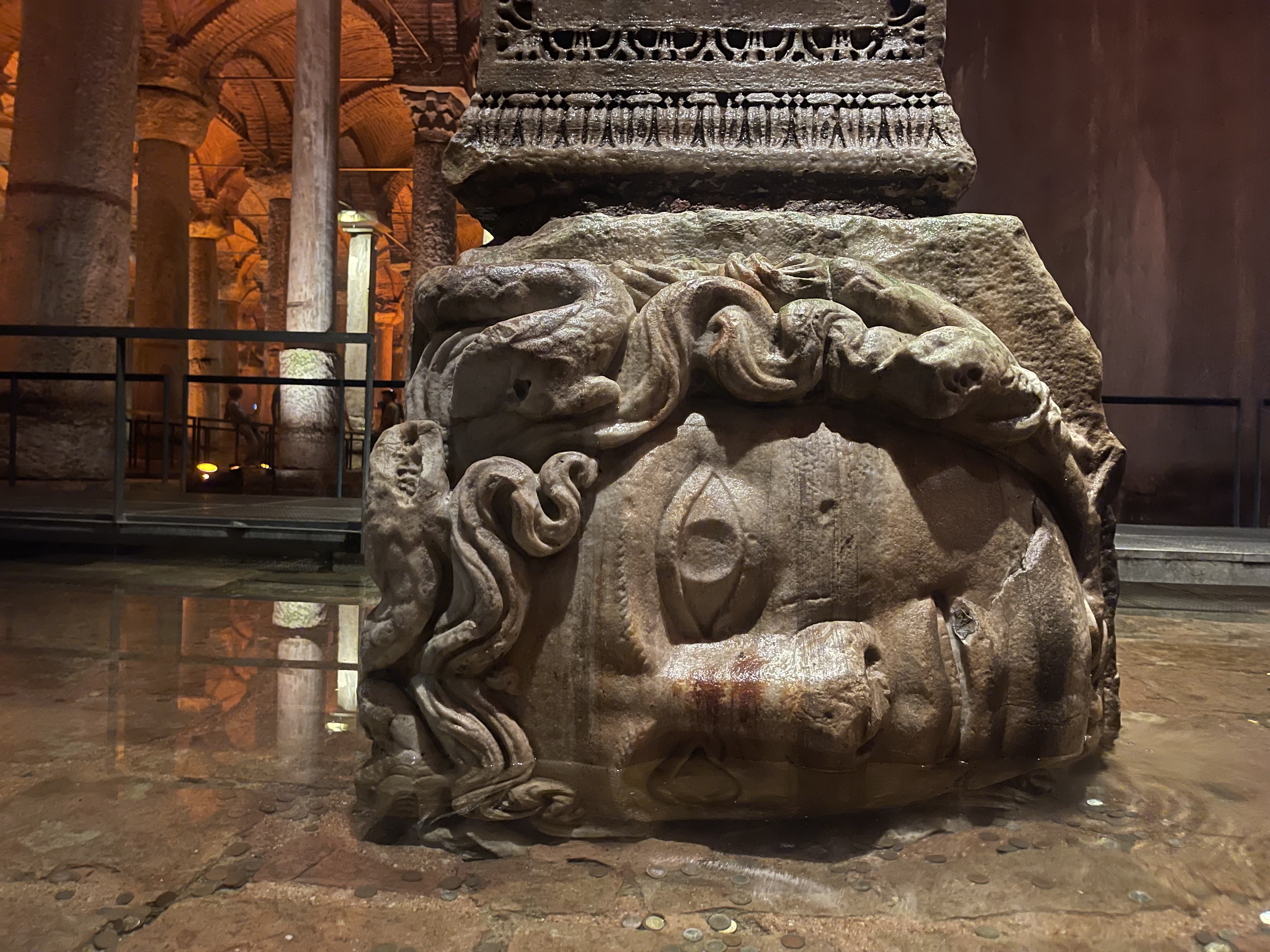
Showing art in the Basilica Cistern can be an intimidating venture. The entire building is one of the most impressive feats in architecture and art. It is art on its grandest scale dating back 1500 years. The opportunity to show work there is as unique as it is challenging. Ancient and contemporary art can complement each other, as they offer different perspectives and insights into the human condition. Ancient art implicitly reflects the culture, beliefs, and values of the past, while contemporary art expresses the creativity, diversity, and challenges of the present. By showing them together, we can appreciate the continuity and change of art throughout history, and also explore the similarities and differences between different times and places.
The Basilica Cistern is a stunning underground reservoir that dates back to the 6th century, built by Byzantine Emperor Justinian I to supply water to the Great Palace. It is also known as the Sunken Palace, because of its majestic columns and arches that create a palace-like atmosphere.
Today the cistern is not only a historical monument, but also a venue for art exhibitions that showcase the creativity and diversity of contemporary Turkish artists. One of the more impressive works is by Ozan Ünal. Ozan Ünal is a Turkish artist who creates sculptures that reflect his personal and cultural memories. His sculptures are often made of metal, wood, or stone, and feature objects such as books, photographs, letters, and musical instruments. His sculptures are inspired by his childhood, his family, and his city, Istanbul. He uses his sculptures to express his emotions, thoughts, and experiences, as well as to question the concepts of identity, history, and transformation.

In terms of ancient art at the Basilica Cistern, perhaps the most captivating are the medusa columns. They are located at the northwest corner of the cistern, supporting two columns with their carved heads. One head is upside down, and the other is sideways. The origin and meaning of these heads are unknown, but there are various theories and legends about them.
Some scholars suggest that the heads were taken from a Roman building or temple that was destroyed, and reused in the cistern as a practical way of recycling materials. Others argue that the heads were deliberately placed in an inverted or tilted position to negate their power, as they represent Medusa, the monstrous Gorgon who could turn anyone who looked at her into stone.
The medusa columns are a fascinating example of the rich and mysterious history of Istanbul, a city that has been influenced by many cultures and civilizations. They also showcase the artistic and architectural skills of the Byzantine and Ottoman empires, who built and restored the cistern over the centuries. The meeting of the ancient and the contemporary does not always go well but there are successful examples of it at the Basilica Cistern.
The meeting of the ancient and the contemporary does not always go well but there are successful examples of it at the Basilica Cistern.